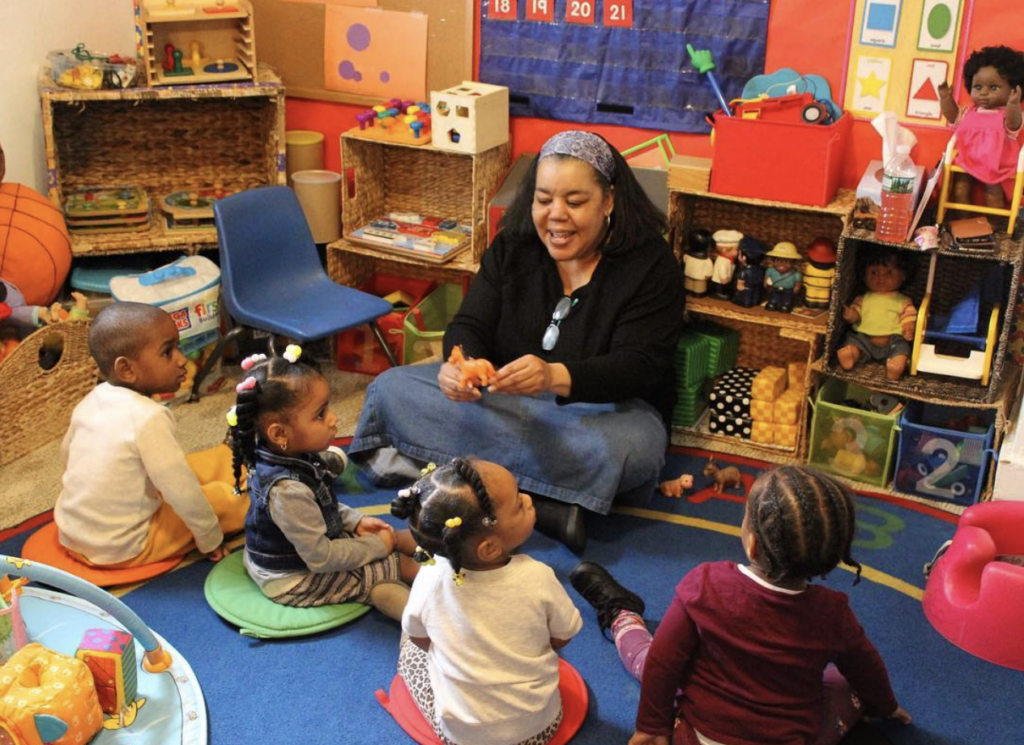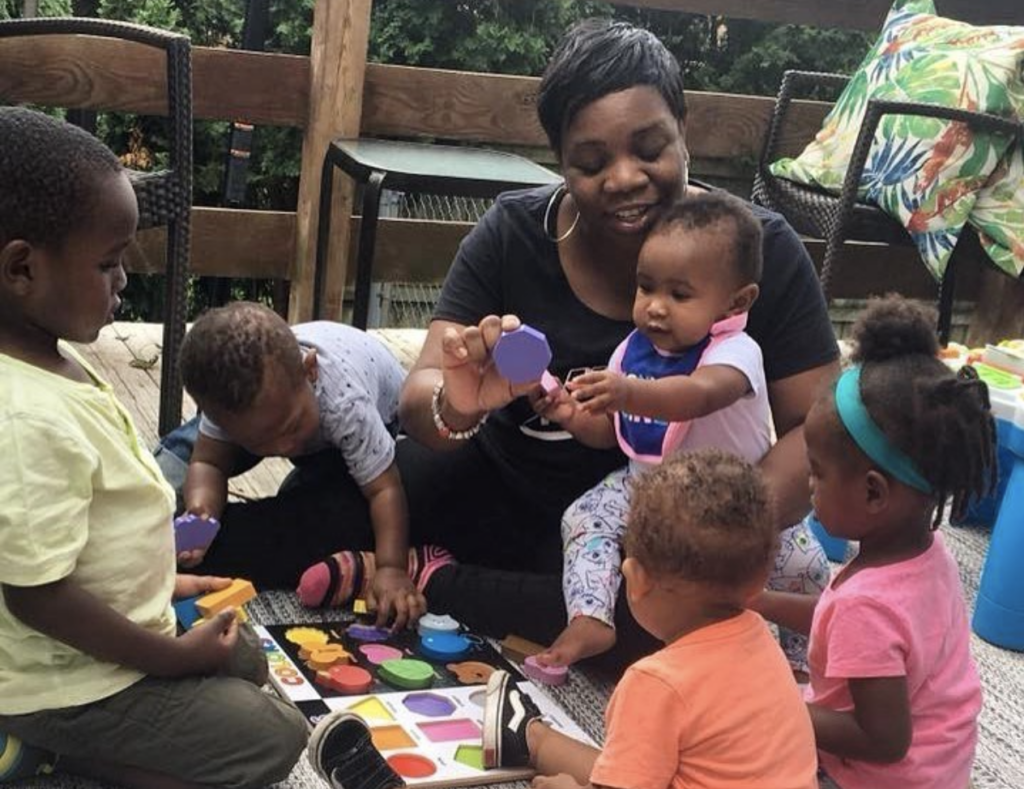Well before the pandemic, the U.S. failed to design a childcare a system that works for families, childcare providers or children.

Treasury Secretary Janet Yellen recently said, “Childcare is a textbook example of a broken market.” She’s right. Women have disproportionately left the workforce during the COVID-19 pandemic, partially due to a lack of childcare. However, the U.S. childcare system was broken well before the pandemic. Racist and sexist beliefs have allowed this market to fail and ensured we never had a system designed to work for all families, childcare providers or children.
Racism and sexism in childcare can be traced back to forcing enslaved Black women to provide childcare, and continued as they became domestic workers who were often excluded from job protections. It shows up today in the form of low wages and lack of benefits for the disproportionate number of women of color working in childcare.
The pattern is repeating itself during the COVID-19 pandemic. Gladys Contreras was one of an estimated 100,000 licensed in-home family childcare educators across the U.S., two-thirds of whom stayed open to care for the children of essential workers. When the pandemic began, 11 out of 12 families withdrew their children from her Connecticut-based program, leaving only one paying family. Not wanting to leave that family in the lurch, Contreras stayed open and operated at a loss, choosing between paying rent and putting food on her table.
When help came, Contreras, who emigrated from Peru, found it difficult to navigate Small Business Administration programs, due to language and technological access barriers. When asked how she fared, she said, “Not being able to work was hard. It was a nightmare for everybody.”
This year, she gradually welcomed back children and helped families deal with the trauma of isolation, lost wages and grief. However, she still has a lot of debt and is unsure she can sustain her childcare business.
On average, educators who care for children in their homes work 60-plus hours per week and often make far below minimum wage, averaging just $6.10 per hour in Connecticut. Contreras, like most childcare educators, absorbed the difference between the actual cost of care and what the market (parents or the government) pays. This is reflected in their low salaries, razor-thin margins and minimal, if any, financial reserves.
While the pandemic has shown a spotlight on their contributions, these sacrifices aren’t new to childcare providers. Black women caring for other people’s children ahead of their own families’ needs can be traced back to slavery and Jim Crow laws. Women of color often worked in white households where they were expected to work as family, justifying long hours and low pay. But as Carolyn Reed, a Black domestic worker organizer in the 1930’s, put it, “I don’t need a family, I need a job.”
Black women caring for other people’s children ahead of their own families’ needs can be traced back to slavery and Jim Crow laws.
When the 1938 Fair Labor Standards Act was passed, guaranteeing minimum wages and standardizing hours, domestic workers, primarily Black women working in white family homes, were excluded. The law was modified to include domestic workers in 1974, however childcare workers still lack living wages and job-based benefits.
Currently, early education and childcare represents the most racially diverse and lowest-paid sector of the teaching workforce. Almost 95 percent of childcare providers are women, and almost 38 percent are Black or Latino, according to US Labor Department data. In K-12 and postsecondary education, approximately 25 percent of staff are people of color. In 2020, the median annual income of childcare providers was $25,460, leaving many of these women teetering on the federal poverty line. This is less than half of the average public school teacher salary for 2019-2020, which was $63,645.

Contreras is hopeful that her country will give her the respect she deserves by ensuring she gets a livable wage. However, for many families childcare is already a big expense and most families cannot afford to pay more.
As Congress works on a plan for families, there are solutions. Over 22 years, All Our Kin has trained, supported and sustained more than 1,100 family childcare educators, including Contreras. Our programs help educators become licensed, gain knowledge on child development and run small businesses. Every dollar invested in this program yields $15 to $20 in gross regional product.
With significant federal investments in childcare, states can adapt this model. Biden’s Build Back Better framework, which passed in the House of Representatives, would make historic investments for universal preschool and childcare—now it is urgent for the Senate to follow suit. This investment makes economic sense, chips away at our gender and racial biases, and prioritizes children, families and their caregivers.
Up next:





